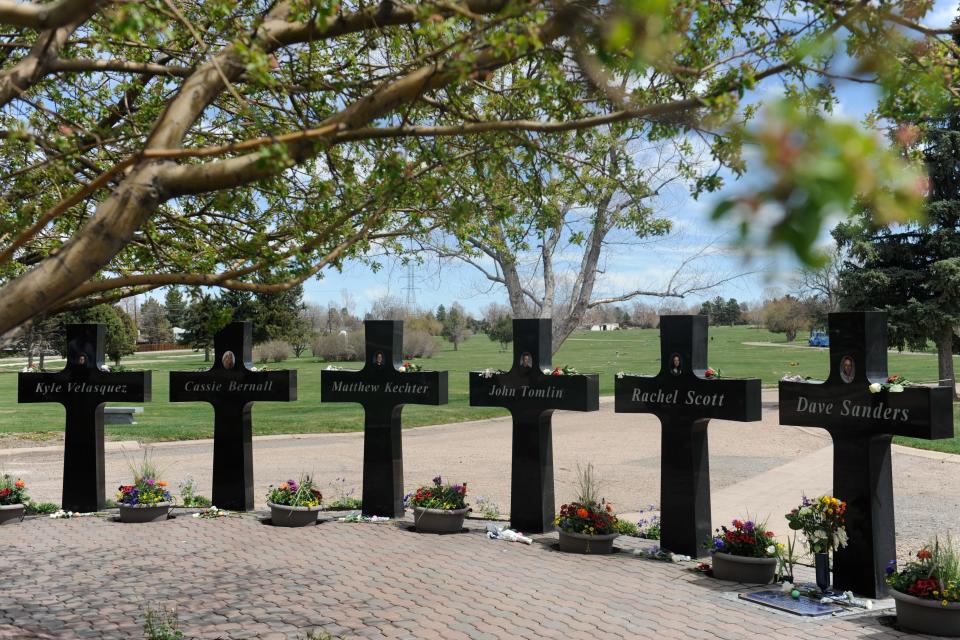25 years after Columbine shooting, schools are safe despite public perception of danger
When it comes to mass killing, April 20 is a day of infamy. On that date 25 years ago, two teenagers became arguably the most notorious school shooters in American history by gunning down a dozen classmates and one teacher at Columbine High in Littleton, Colorado.
The 1999 Columbine massacre was neither the first nor the deadliest school shooting in our nation’s past, but by all measures it's the most significant in its impact on school policies, public attitudes and popular culture.
For the first time, the horrific drama was broadcast live. Recordings of the two assailants planning and practicing for the assault were released publicly. Regrettably, a Columbine video game, T-shirts and other cultural artifacts gave the two shooters the celebrity status they sought.
Dylan Klebold and Eric Harris fully expected to achieve fame and notoriety. As one of the assailants predicted in the so-called Columbine Basement Tapes, “I know we’re gonna have followers because we’re so (expletive) God-like.” And their influence has persisted ever since with more than 100 copycats committing or attempting to commit similar attacks at schools across America.
The Columbine effect is much wider than the occasional acts of copycats. It includes ways in which schools have been transformed in terms of security and the widespread perception of students and their parents that schools are unsafe.
Columbine gave rise to school lockdown drills

In the aftermath of Columbine, parents began to purchase bullet-resistant backpacks for their children. And schools began to stage lockdown drills that have questionable value but unnerve many impressionable children with attempts at realism.
Columbine might have been the catalyst for widespread panic, but various data reports have served to reinforce and increase the sense of danger.
For example, the Center for Homeland Defense and Security’s K-12 School Shooting Database suggests that the number of incidents has grown exponentially − with nearly 1,000 cases since 2021. Importantly, the definition of a school shooting used in this database is quite broad: “a gun is fired, brandished, or bullet hits school property, regardless of the number of victims (including zero), time, day, or reason.”
My analysis, as a professor of criminology, of the K-12 school school shooting data for the past three years indicates that nearly 90% of the shootings did not take place inside the school itself, but in parking lots, athletic fields or school buses, where lockdown drills and metal detectors are not relevant.
The math on school shootings: As students head back to school, should parents worry about shootings? The math says no.
Of course, frightened parents think about the threat of a Columbine-type massacre when confronted with these statistics. However, the overwhelming majority of incidents have little to do with the safety of their children while in school.
The fears of students and their parents are focused more on active shooters, whether they are students or outsiders, roaming the hallways armed with a powerful instrument of death.
Based on my review of FBI documents, since Columbine there have been 50 of that specific type of attack, resulting in victim injuries or fatalities, for an average of two per year. Of course, that is out of nearly 130,000 schools in America.
Congress has ignored gun violence. Here are the voices of the victims from Marjory Stoneman Douglas High School in Parkland, Florida.
Although understandable, our response to school shootings − requiring students to participate in active shooter drills, arming teachers, installing security equipment − is out of proportion with the actual risk.
These actions intensify fears, rather than alleviate them, by suggesting to students that a bullseye is on their backs.
Threat of school shootings needs context
While there might be a handful of students who idolize the Columbine shooters and decide to follow their lead, history suggests that we might reduce fears as well as the risk by downplaying the threat of school shootings.
From 1996 through 2001, there were eight multiple fatality school shootings in the United States, prompting newsman Dan Rather in March 2001 to declare that school shootings were a national epidemic. But then there were none for the next four years.
Opinion alerts: Get columns from your favorite columnists + expert analysis on top issues, delivered straight to your device through the USA TODAY app. Don't have the app? Download it for free from your app store.
Once the Sept. 11, 2001, terrorist attacks took place, Americans shifted their attention and concerns away from school shootings and squarely on a different threat to their safety.
I’m certainly not suggesting that we invite a tragedy to deflect attention from school shootings, only that we keep the risk in its proper perspective. Schools are indeed safe. Offered structure and supervision, children are safer in school than out.
James Alan Fox is the Lipman professor of Criminology, Law and Public Policy at Northeastern University and author of "Violence and Security on Campus: From Preschool through College."
You can read diverse opinions from our Board of Contributors and other writers on the Opinion front page, on Twitter @usatodayopinion and in our daily Opinion newsletter.
This article originally appeared on USA TODAY: Columbine made us mistakenly believe kids aren't safe in school

